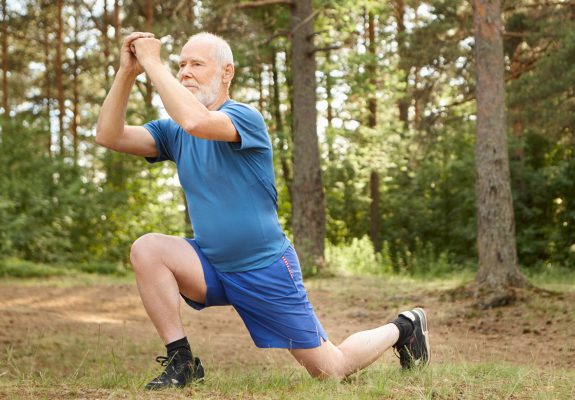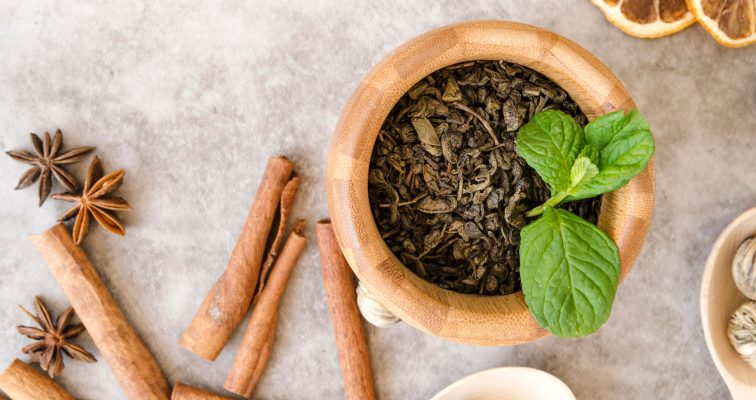Ayurveda
Natural Arthritis Prevention and Management: Tips for a Pain-Free Life 2023
Understanding Arthritis and Prevention
Arthritis is a common and often debilitating condition that affects millions of people worldwide. While there is no guaranteed way to prevent arthritis, adopting natural approaches and making lifestyle changes can reduce the risk of developing this painful condition and help manage its symptoms effectively. In this article, we’ll explore arthritis prevention naturally and strategies for managing arthritis to lead a pain-free lifeArthritis is a broad term that encompasses over 100 different types of joint diseases and related conditions. The two most common types are osteoarthritis (OA) and rheumatoid arthritis (RA). OA is often associated with the wear and tear of joints over time, while RA is an autoimmune disease that causes the immune system to attack the joints.
Osteoarthritis, often associated with aging and wear and tear, results from the gradual breakdown of cartilage, leading to pain and reduced joint function. Rheumatoid arthritis, on the other hand, is an autoimmune condition where the body’s immune system mistakenly attacks joint tissues, causing inflammation and joint damage.
Arthritis can significantly impact one’s quality of life, hindering everyday activities and mobility. It can affect any joint in the body, from the fingers and knees to the spine and hips. Although there is no cure for arthritis, various treatments, including medications, physical therapy, lifestyle modifications, and surgical interventions, aim to manage symptoms, improve joint function, and slow disease progression.
Early diagnosis and proactive management are crucial in minimizing the long-term effects of arthritis. With ongoing research and advancements in medical and alternative therapies, individuals with arthritis can find relief and better manage their condition, allowing them to lead fulfilling and active lives despite the challenges posed by this chronic joint disorder.
There are more than 100 different types of arthritis, each with its own distinct characteristics, causes, and treatment approaches.
Here are some of the most common types of arthritis:
- Osteoarthritis (OA):
- Osteoarthritis is the most common form of arthritis and typically occurs as people age.
- It results from the gradual breakdown of cartilage, the cushioning tissue at the ends of bones.
- Symptoms include joint pain, stiffness, and reduced range of motion, often affecting weight-bearing joints like the knees, hips, and spine.
- Rheumatoid Arthritis (RA):
- Rheumatoid arthritis is an autoimmune disorder where the body’s immune system mistakenly attacks the synovium (the lining of the membranes that surround the joints).
- It causes chronic inflammation, joint pain, swelling, and deformity.
- RA can affect multiple joints simultaneously and may lead to systemic complications.
- Psoriatic Arthritis:
- Psoriatic arthritis is associated with the skin condition psoriasis.
- It can affect joints, causing pain, swelling, and stiffness.
- Psoriatic arthritis may also cause nail changes and can affect any joint in the body.
- Ankylosing Spondylitis (AS):
- Ankylosing spondylitis primarily affects the spine, causing inflammation and fusion of the vertebrae.
- This condition often leads to stiffness and pain in the lower back and can affect other joints and organs.
- Gout:
- Gout is caused by the buildup of uric acid crystals in the joints, leading to sudden and severe attacks of pain, redness, and swelling, often in the big toe.
- It is often associated with dietary factors and genetics.
- Juvenile Idiopathic Arthritis (JIA):
- JIA refers to a group of arthritis conditions that occur in children under the age of 16.
- It can affect one or multiple joints and may have varying degrees of severity.
- Lupus Arthritis:
- Systemic Lupus Erythematosus (SLE) can cause arthritis as one of its symptoms.
- Lupus arthritis typically involves swelling and pain in the joints, along with other systemic symptoms.
- Reactive Arthritis:
- Reactive arthritis often follows an infection in another part of the body, such as the urinary or gastrointestinal tract.
- It can lead to joint pain, inflammation, and other symptoms.
- Sjögren’s Syndrome:
- Sjögren’s syndrome primarily affects the glands that produce tears and saliva but can also cause joint pain and inflammation.
- Osteoporosis-Related Arthritis:
- Osteoporosis can lead to fractures in the bones and the pain associated with these fractures is sometimes categorized as arthritis.
Understanding the specific type of arthritis you have is essential for proper management and treatment. It’s important to consult with a healthcare professional for an accurate diagnosis and personalized treatment plan tailored to your condition.
Natural Prevention for Arthritis:
- Maintain a Healthy Weight: Excess weight puts additional stress on your joints, particularly in the knees, hips, and spine. Losing weight if you are overweight can significantly reduce the risk of developing arthritis and alleviate symptoms if you already have it.
- Regular Exercise: Engaging in regular physical activity is crucial for strengthening the muscles around your joints and maintaining joint flexibility. Low-impact exercises such as swimming, cycling, walking, and yoga can be particularly helpful.
- Balanced Diet: Follow an anti-inflammatory diet rich in fruits, vegetables, whole grains, and lean proteins. Foods high in omega-3 fatty acids, like flaxseeds, and walnuts, can help reduce inflammation.
- Stay Hydrated: Proper hydration is essential for maintaining the health of cartilage in the joints. Drinking enough water ensures that your joints stay lubricated and function optimally.
- Limit Processed Foods: Highly processed foods, sugary snacks, and sugary beverages can contribute to inflammation in the body. Reducing the consumption of these items can help prevent arthritis.
- Supplements: Some supplements, such as glucosamine and chondroitin sulfate, are commonly used to support joint health. Consult with a healthcare professional before adding supplements to your routine.
- Protect Your Joints: If you engage in activities that put stress on your joints, such as sports or heavy lifting, use proper techniques and protective gear.
- Warm-Up and Cool Down: Before engaging in physical activity, warm up your muscles and joints with gentle stretching and movements. Afterward, cool down with stretches to prevent stiffness.
- Proper Footwear: Choose supportive and comfortable shoes that provide adequate cushioning and arch support. Proper footwear can help protect your knee and hip joints.
- Regular Check-Ups: Keep up with regular health check-ups and consult a healthcare provider if you experience joint pain or stiffness. Early diagnosis and treatment can prevent the progression of arthritis.
Dietary Modifications:
Balanced Diet: Follow a balanced diet that is suitable for your dosha type. Consult an Ayurvedic practitioner for personalized dietary recommendations.
Anti-Inflammatory Foods: Incorporate anti-inflammatory foods like ginger, turmeric, garlic, and green leafy vegetables into your diet.
Avoid Trigger Foods: Reduce or eliminate foods that may aggravate arthritis symptoms, such as processed foods, refined sugars, and excessive caffeine.
Ayurvedic ways:
- Herbal Remedies:
Turmeric: Turmeric is a potent anti-inflammatory herb. You can take it in the form of capsules or add it to your food.
Ashwagandha: This adaptogenic herb can help reduce inflammation and promote overall well-being.
Guggul: Guggul resin has anti-inflammatory properties and is commonly used in Ayurveda for arthritis management.
- Panchakarma Therapy:
Panchakarma is an Ayurvedic detoxification therapy that can help remove toxins and balance the doshas. It may include procedures like oil massages (Abhyanga), steam therapy (Swedana), and therapeutic enemas (Basti).
- Yoga and Exercise:
- Gentle yoga poses and stretching exercises can help improve flexibility and reduce pain associated with arthritis.
- Consult an Ayurvedic practitioner or yoga instructor for personalized recommendations.
- Lifestyle Modifications:
- Maintain a regular daily routine (Dinacharya) that includes adequate sleep, stress management, and proper hygiene.
- Avoid excessive physical and mental stress, which can exacerbate arthritis symptoms.
- Ayurvedic Medications:
Ayurvedic practitioners may recommend specific herbal formulations or medications tailored to your dosha imbalance and arthritis type.
- Oil Massages:
Massaging the affected joints with warm herbal oils, such as sesame or coconut oil, can provide relief from pain and stiffness.
- Dietary Supplements:
Ayurvedic supplements like Shallaki (Boswellia serrata) or Guduchi (Tinospora cordifolia) may be recommended to reduce inflammation and improve joint health.
Conclusion:
Arthritis is a complex and diverse group of joint disorders that can significantly impact a person’s quality of life. While it may not always be possible to prevent arthritis entirely, adopting natural approaches and lifestyle modifications can reduce the risk of developing this condition and help manage its symptoms effectively. Remember that arthritis management is not one-size-fits-all, and it’s essential to work closely with healthcare professionals or Ayurvedic practitioners to develop a personalized treatment plan tailored to your specific needs and condition. By incorporating these natural prevention and management strategies, individuals can enhance their quality of life and reduce the impact of arthritis on their daily activities and mobility.



